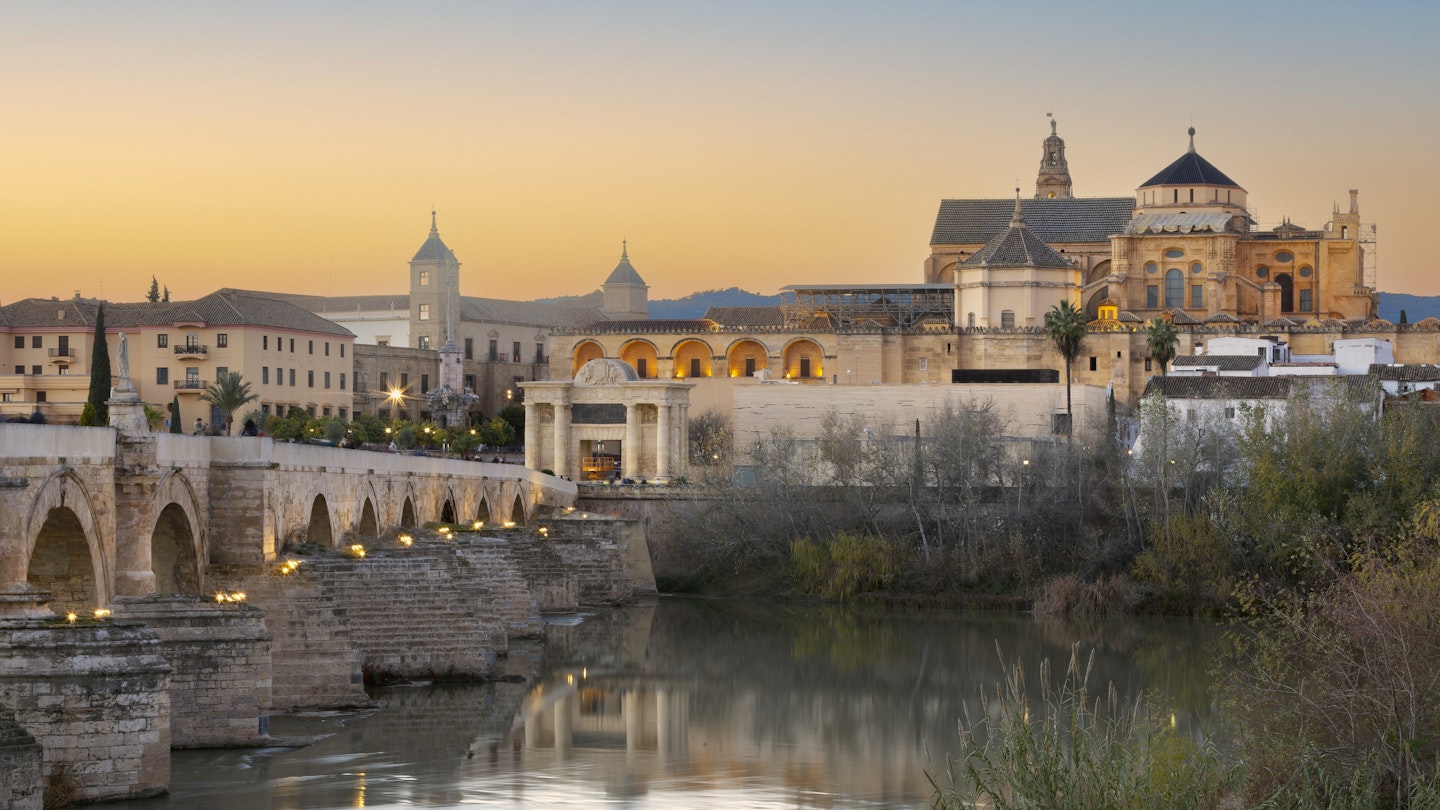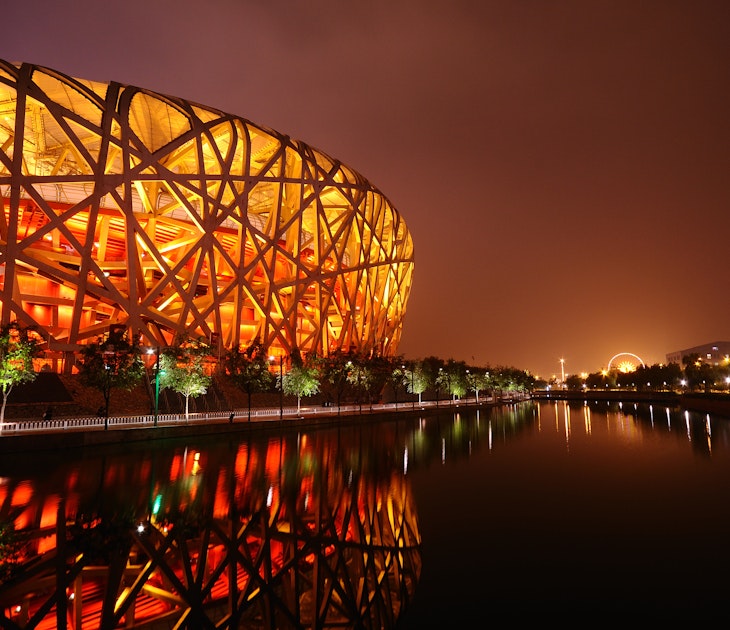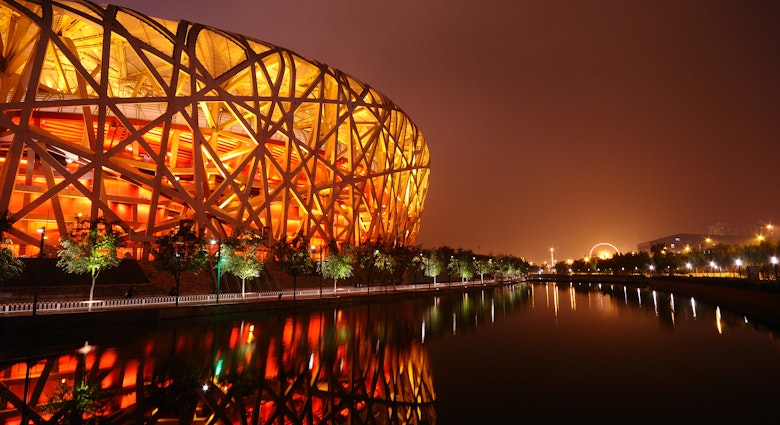From Moorish monuments and Roman ruins to Gothic gargoyles and modern marvels, these cities have glorious design masterpieces.
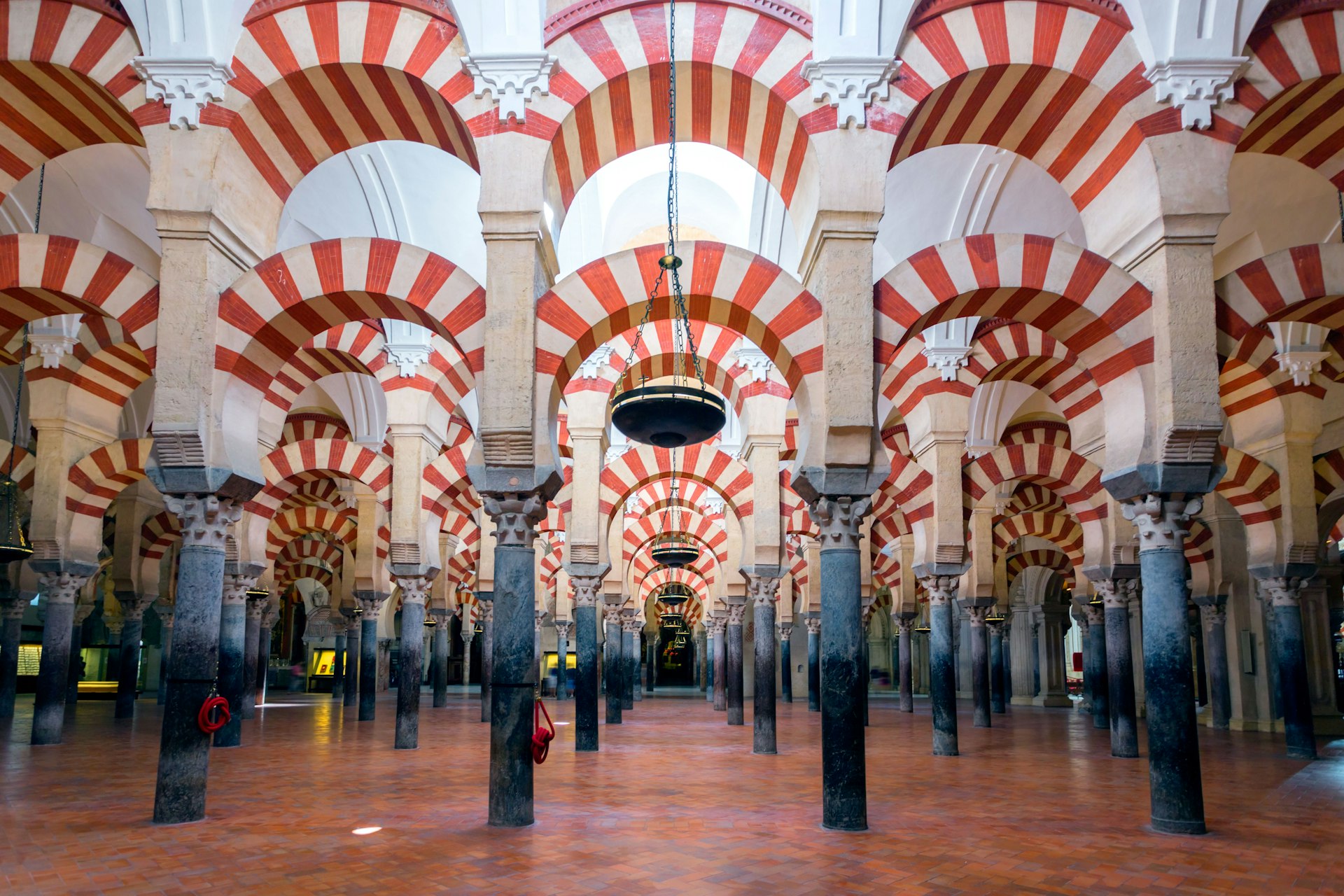
1. Córdoba, Spain
Ask people to rattle off Andalucía’s architectural knockouts and Granada and Seville invariably make the grade. Less hyped but just as Moorish is Córdoba. You’ll never forget the moment you first lay eyes on the 8th-century Mezquita (Great Mosque). Passing the fountain-splashed, orange-tree-shaded Patio de los Naranjos courtyard, once the site of ritual ablutions before prayer. The minaret rising up to offer sweeping city views. Then the main event: the astonishing maksura, with its skylit domes, star-patterned stone vaulting and arches forming a forest of interwoven horseshoe shapes. Pinging you back to an age when Córdoba was capital of the Muslim kingdom of Al-Andalus, this is one of Europe’s most brilliant Islamic jewels.
But since Córdoba has four UNESCO World Heritage sites, the Mezquita is just the tip of the cultural iceberg. The city’s real magic unfolds when you slip away from the crowds and dive into the medieval centre’s maze of cobbled lanes, strolling past wrought-iron balconies, potted plants, flower-draped patios, hidden plazas and ornate buildings of golden stone. Other Moorish beauties include the remains of the Medina Azahara, a lavish palace-city built by Caliph Abd ar-Rahman III in the 10th century for his favourite wife, Az-Zahra. Brimming with fish ponds, fountains, orange trees and flowers, the terraced gardens of fort-turned-palace Alcázar de los Reyes Cristianos are also a delight to stroll.
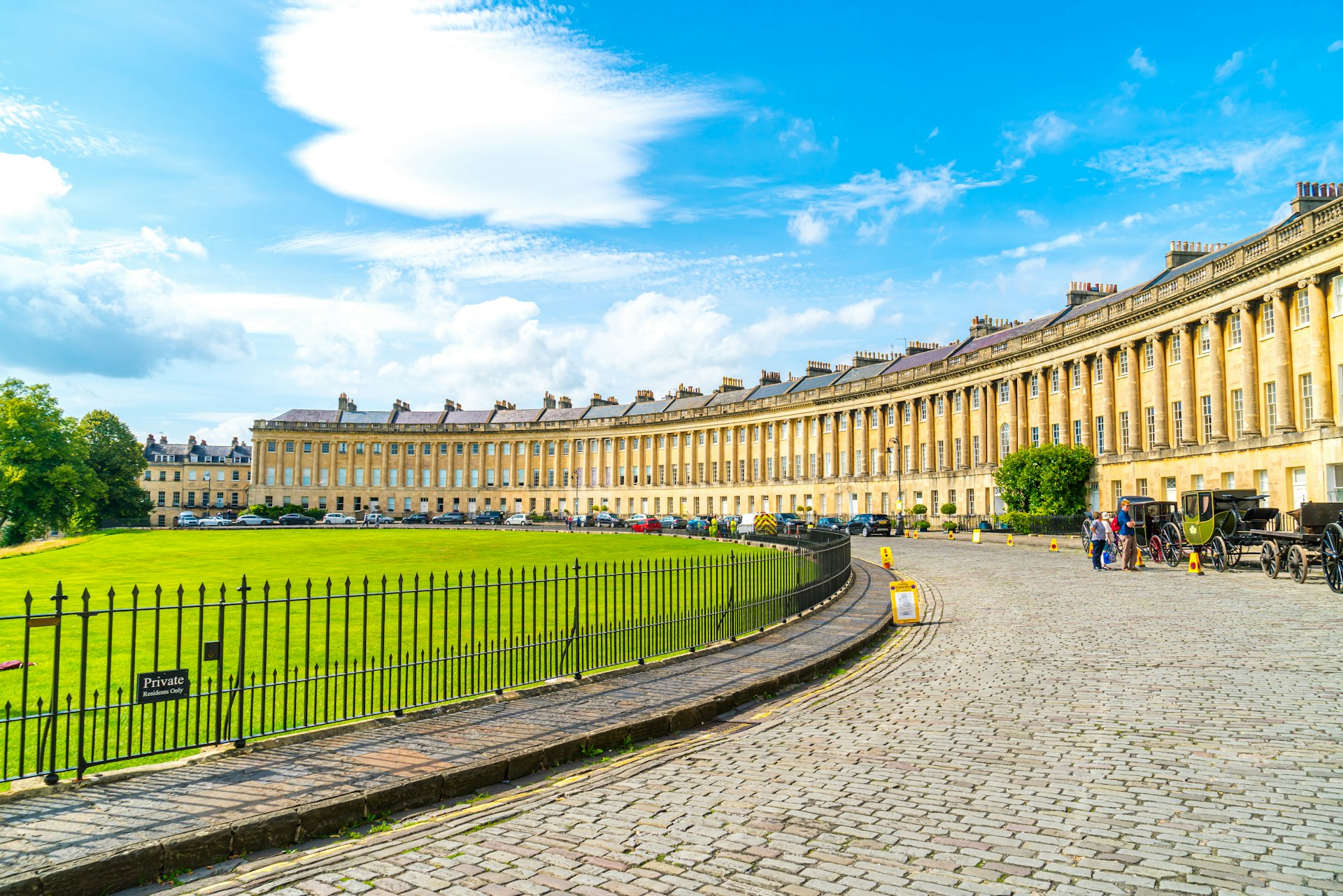
2. Bath, UK
The pomp and ceremony of high society and the grace of Georgian architecture mix and mingle in Bath, a refined vision of limestone along the banks of the River Avon in Somerset, England. This easy-on-the-eye city whisks you back to the 1800s in streets that look ripe for a bodice-ripping period drama. Indeed, many scenes in TV romance Bridgerton were filmed here, while novelist Jane Austen called the spa town home from 1801 to 1806.
Parade around the show-stopping Royal Crescent, a grand semicircle of magnificent houses overlooking Royal Victoria Park, designed by John Wood the Younger (1728–82), then pop into No 1 for an insight into the razzle-dazzle of Georgian life. Inspired by Rome’s Colosseum, The Circus is another of Wood’s unmissable masterpieces. Famous past residents include Thomas Gainsborough, Clive of India, David Livingstone…and the actor Nicholas Cage.
Bubbles drew fashionable folk to Bath in the first place. Attracted by its 46°C (115°F) hot springs, the Romans first arrived in the place some 2000 years ago, and built a spectacular bathhouse dedicated to the healing goddess Sulis-Minerva. Rewind time at the Roman Baths, one of the world’s best-preserved ancient Roman spas.
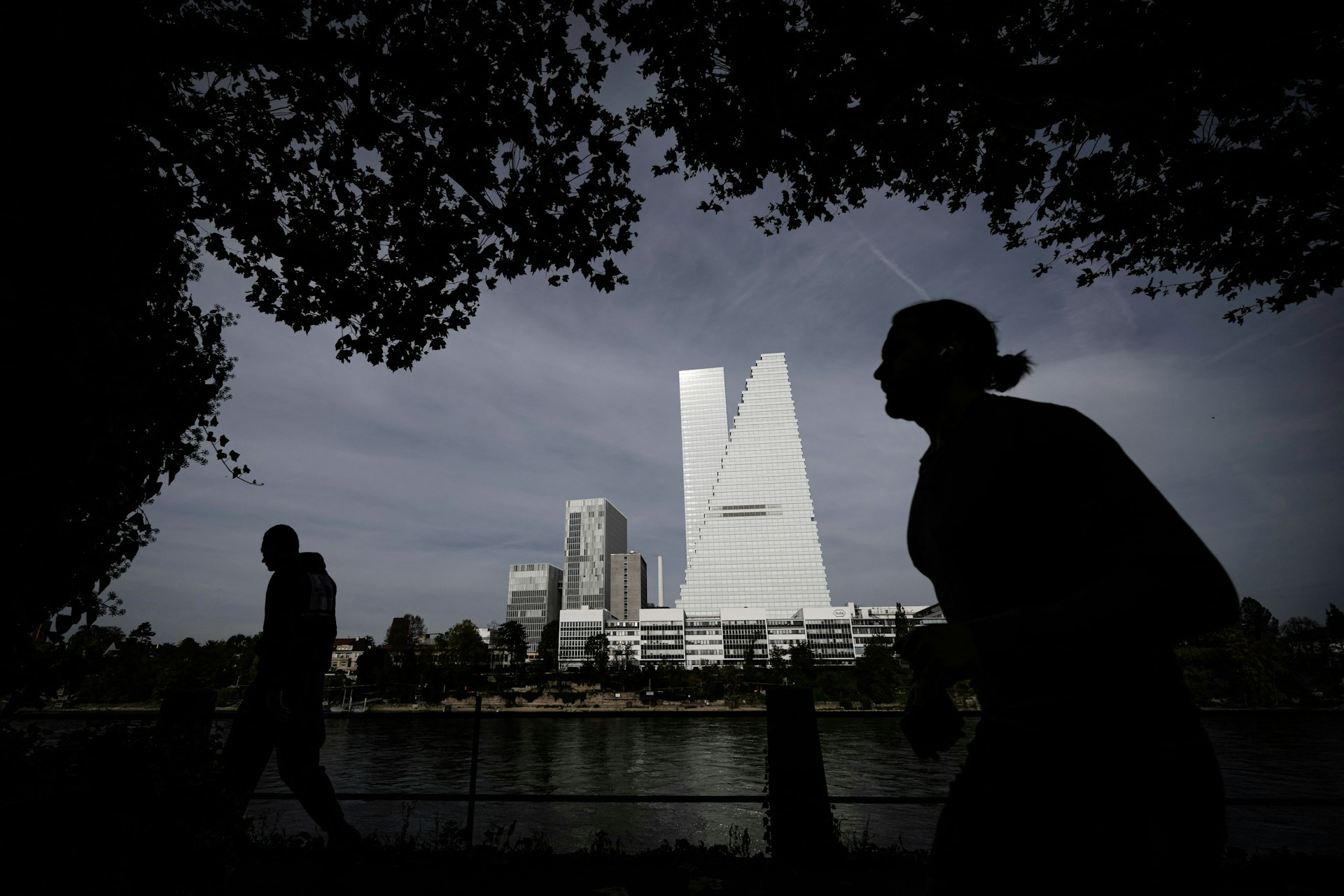
3. Basel, Switzerland
Other Swiss cities bowl you over with postcard-perfect Alpine backdrops and quaintly cobbled streets. Not Basel. Sitting astride the Rhine and nudging the German and French borders, this dynamic, finger-on-the-pulse city in northern Switzerland is making big waves in uncharted waters when it comes to avant-garde art and architecture. A flurry of buildings bear the imprint of Pritzker Prize–winning architects, while the cultural-juggernaut art fair Art Basel takes place each June.
Devise your own self-guided tour of the architectural heavy hitters. Eye-catching works by Swiss starchitect Mario Botta include the curvy, 69.5m-high (228ft), iconically 1970s BIS Tower, and the rose-pink sandstone Museum Jean Tinguely (1996), with its long, sloping, Rhine-facing gallery. Home-grown darlings Herzog & de Meuron have left their idiosyncratic stamp on buildings such as the monolithic, copper-clad Zentralstellwerk SBB (1999), the strikingly silver-scaled Museum der Kulturen (2011) and the jagged, skyscraping, energy-efficient Roche Towers (2015).
More, you say? Check out Fondation Beyeler, a long, low, light-filled, open-plan building designed by Italian architect Renzo Piano, and the Vitra Design Museum at the Vitra Campus, Frank Gehry’s swirling, deconstructivist wonder in white plaster and titanium-zinc alloy, presenting works by Frank Gehry, Zaha Hadid, Álvaro Siza and Tadao Ando and others. Two-hour architecture tours spotlight the backgrounds of architects and buildings.
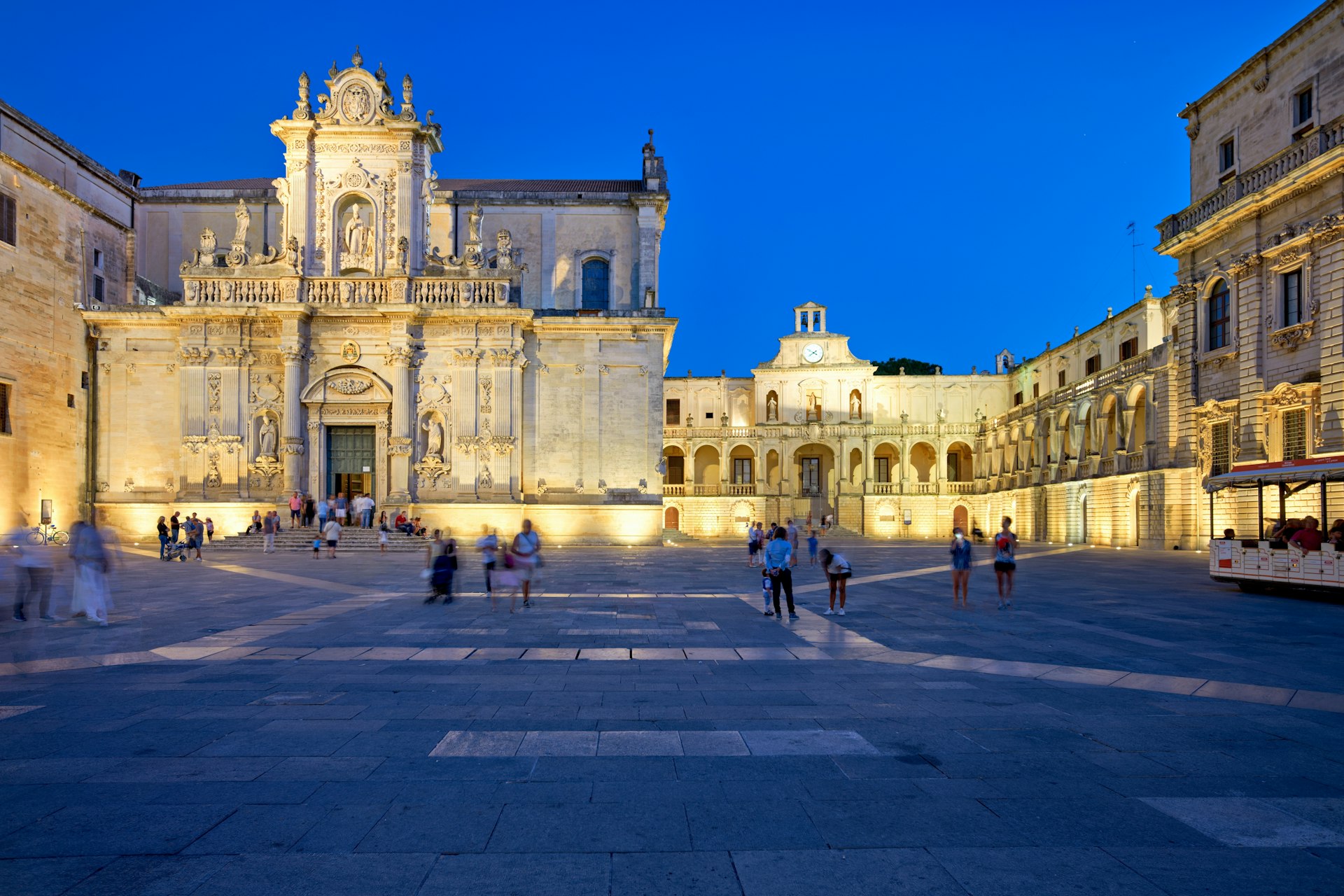
4. Lecce, Italy
Florence gets all the fuss, but as anyone who loves Italian architecture will tell you (sotto voce), Lecce in Puglia is every bit as fabulous, with its riotous ensemble of baroque buildings bearing the hallmark of 17th-century homegrown masters like Francesco Antonio Zimbalo and his grandson Giuseppe Zimbalo.
In the high heel of Italy’s boot, Lecce has an architectural style so distinctive it gets its own name: barocco leccese (Lecce baroque), an exuberant expression of the genre. Balconies, loggias, porticoes, cornices and façades hewn from local honey-hued limestone come lavishly embellished with gargoyles, asparagus columns, flowers, garlands and cavorting gremlins. In the 18th-century, Irish revolutionary and traveller Thomas Ashe raved about Lecce being “the most beautiful city in Italy” – and it’s certainly right up there.
The crowning glory is the Basilica di Santa Croce, its fantastical façade swirling with allegorical beasts and plump cherubs. (Less than impressed, one Marchese Grimaldi said it made him think a lunatic was having a nightmare.) You’ll get another full-on whack of baroque at the Piazza del Duomo, framed by the ornate baroque cathedral, its bell tower and the episcopal palace. But don’t be fooled: Lecce is older than it looks. Below the ground level of the piazza is a 2nd-century-CE Roman amphitheater.
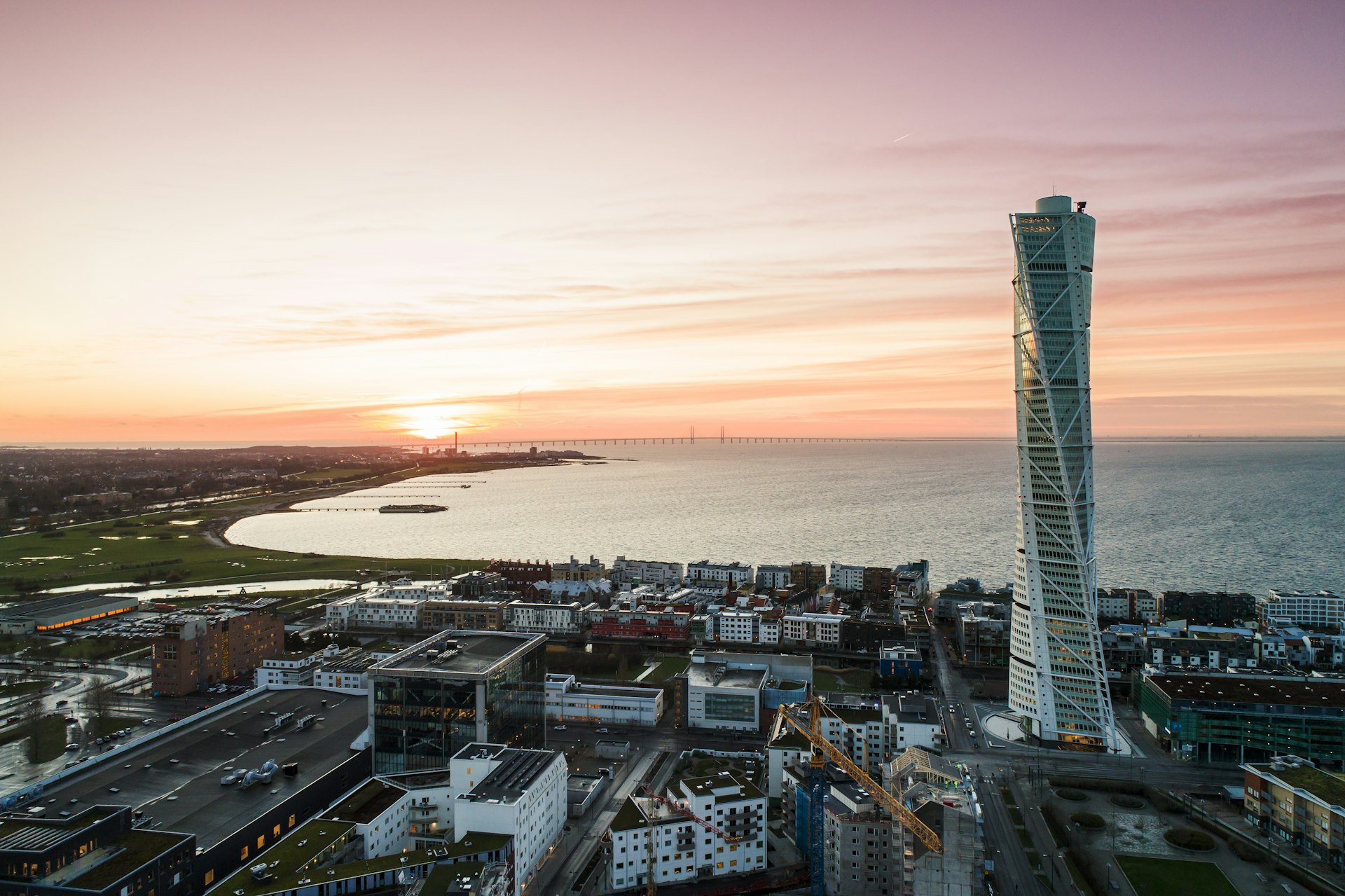
5. Copenhagen, Denmark and Malmö, Sweden
UNESCO World Capital of Architecture from 2023 to 2025 and hotbed of Scandi cool, Copenhagen has long been compelling for its modernist architecture, with stunners like Arne Jacobsen’s functionalist, nature-immersed Bellevue Theater, and monumental 1970s-era National Bank of Denmark. Today, the Danish capital is making new waves with a raft of ultra-progressive buildings that play up the sleekly minimalist, light-flooded, nature-inspired new-Nordic aesthetic. For an immersive experience, get the app or hook onto guided walking tours to dash past the most eye-catching creations. These begin at the Dansk Arkitektur Center, lodged in the harborside BLOX building, a glass marvel by Dutch architect Rem Koolhaas.
For a glimpse of a greener, cleaner architectural future, take a quick metro ride to Copenhagen’s Ørestad neighborhood on the island of Amager, where the city merges into nature reserve. Architects have unleashed their full rule-bending, eco-conscious genius here, with the likes of Upcycle Studios, a row of townhouses built from waste materials destined for landfill; Danish architectural firm BIG’s 8 House, with its sloping green roofs; and the great golden, wooden fin-clad sweep of the Royal Arena.
For more Nordic brilliance, cross the landmark Öresund Bridge (familiar to fans of the Scandi-noir crime drama series The Bridge) to Malmö in Sweden. The huge architectural draw here is Turning Torso, a futuristic, 57-story high skyscraper that twists a full 90 degrees from bottom to top. Designed by Spanish architect Santiago Calatrava and completed in 2005, it’s Scandinavia’s tallest building, at 190m (623ft).
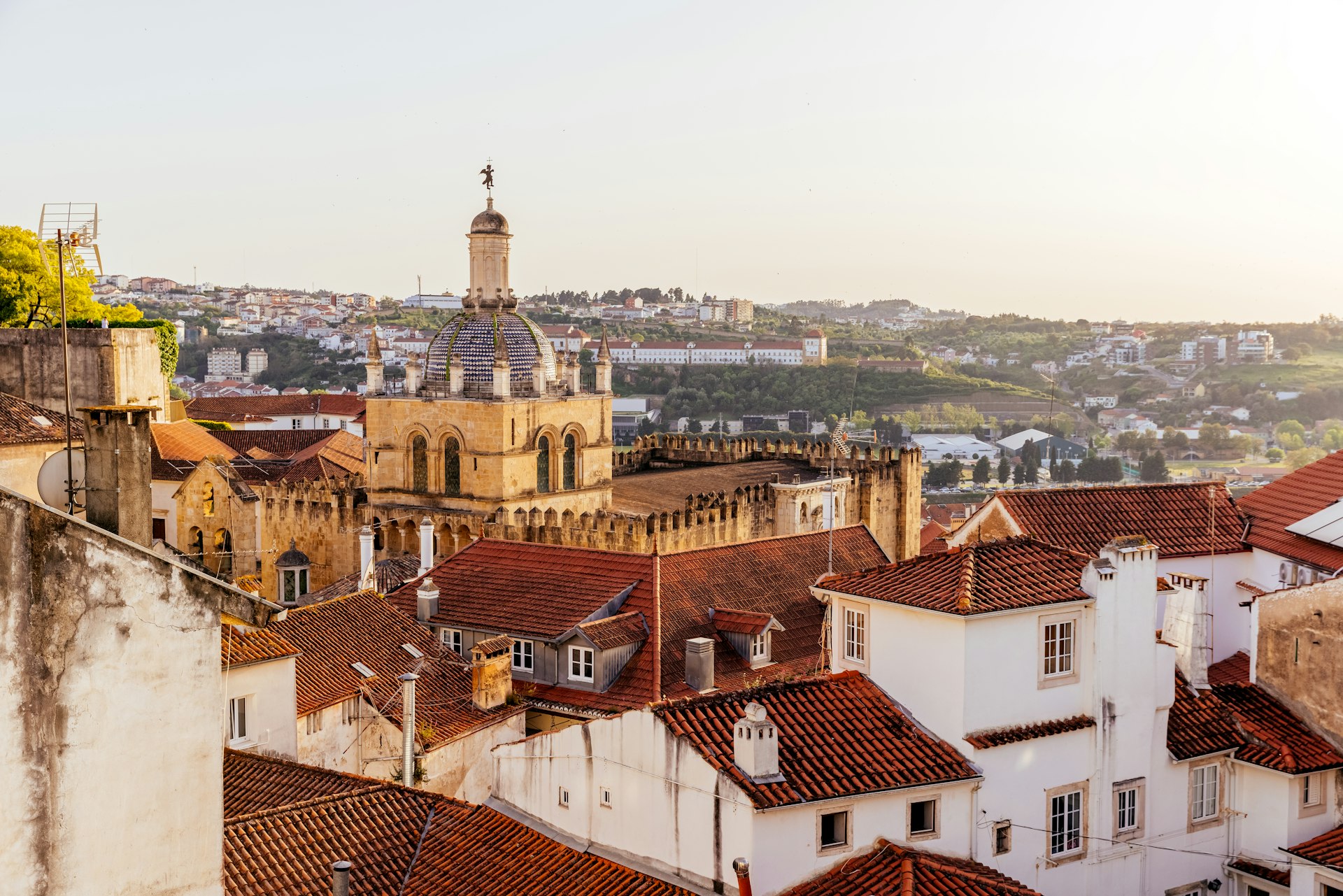
6. Coimbra, Portugal
Lisbon and Porto are always at the top of Portugal wishlists, but if you fancy rewinding to the Middle Ages, head instead to the country’s third city, Coimbra, midway between the bigger two. Rising dramatically from the Rio Mondego, this soulful town enthralls, its steeply stacked, medina-lined historic center nodding to Moorish rule. Tread in wonder through lanes cobbled in black basalt and white limestone in the traditional calçada portuguesa (Portuguese paving) style. When the lanterns flick on in the evening, the old stone walls reverberate with the strum of the guitarra and melancholic strains of fado singers.
Celts, Romans, Visigoths, Moors: each wave of settlers has left its mark. Begin your chronological romp at the Museu Nacional de Machado de Castro, eyeing the remains of the ancient Roman Forum in the maze of tunnels under the building (the cryptoporticus). The Moors conquered and fortified Coimbra in 711; the heavy-duty Arco de Almedina arch and tower they constructed still lead to the upper town. Puff up the steep stairs nicknamed Rua Quebra-Costas (“Backbreaker”) to emerge in the city's historic heart. Here, you’ll be drawn to the Romanesque beauty of the 12th-century Sé Velha, bankrolled by Portugal’s first king, Afonso Henriques, in 1184. Built to defend against the Moors, the crenelated exterior, with its narrow, slit-like windows, is particularly captivating on warm summer evenings when its stone seems to glow in the soft light.
The architectural treasure hunt doesn’t stop there. For a brush with Coimbra’s academic greatness, visit one of the world’s oldest universities, the UNESCO-listed Universidade de Coimbra, founded in 1290. Its showpieces are the Pátio das Escolas, a vast courtyard surrounded by majestic 16th- to 18th-century buildings, and the lavishly baroque Biblioteca Joanina, embellished with gold and frescoes.
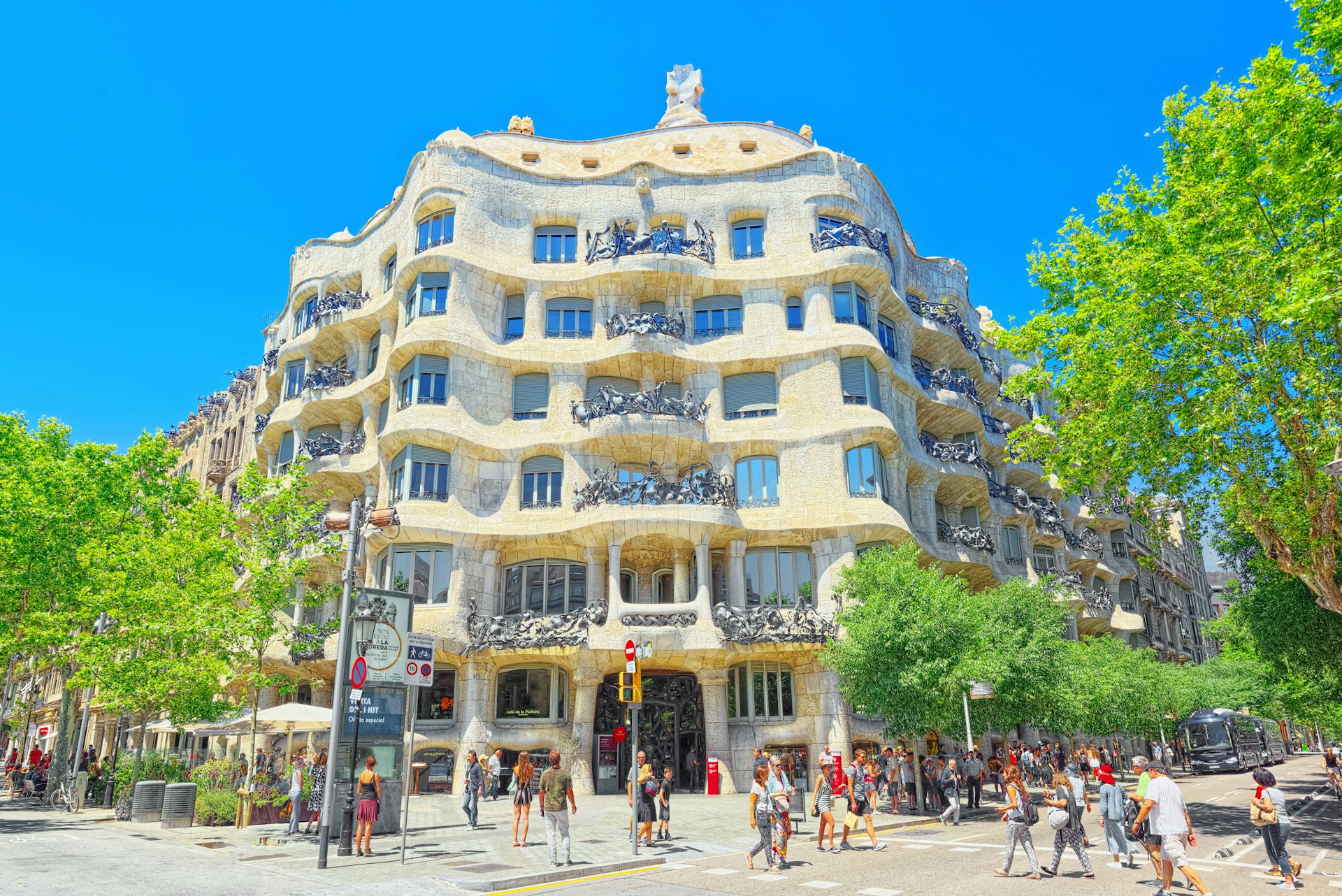
7. Barcelona, Spain
All eyes are on the coast-hugging capital of Catalonia as it gears up to take the reins as UNESCO World Capital of Architecture in 2026. To trip back through the centuries, make for the tangle of narrow, cobbled lanes of Barcelona’s Barri Gòtic (Gothic Quarter), atmospherically lantern-lit by night. These dark and mysterious streets brim with history: ruins of ancient Rome in defensive walls, aqueducts and the treasures of the Museu d’Història de Barcelona, classic Catalan Gothic churches like the 14th-century Basílica de Santa Maria del Pi and the richly carved, gargoyle-festooned Catedral.
Fast-forwarding in time, you’ll be keen to take in Modernista (Catalan art nouveau) marvels, many of which reveal the color-charged, whimsically chimney-topped, dream-like touch of Antoni Gaudí (1852–1926). More magician than architect, this man truly shaped his beloved city. Drawing the biggest crowds is his magnum opus, La Sagrada Família, a riot of wax-candle-like spires dripping with organic detail, set for completion – 144 years after construction began – in 2026. But curvy Casa Batlló, shimmering with trencadís (smashed-up tiles) and topped by a dragon-back roof, and the undulating, whimsically chimney-topped, UNESCO-listed La Pedrera (or Casa Milà) are just as splendid.
Gaudí’s genius wasn’t confined to bricks and mortar. Take a romp around hilltop Park Güell to see fairy-tale-like columns and great waves of mosaics that frame the Barcelona skyline and sea beyond.

8. Bergen, Norway
Nestled between mountains and shaped by the sea, Bergen in Norway’s Western Fjords ruled the waves in the Middle Ages as Norway’s capital, an important seaport and a member of the Hanseatic League. All the might of seafaring traders, merchants, ship owners and fishermen shines in the beautifully preserved timber buildings of the UNESCO World Heritage site of Bryggen. The heart of the trading empire from the 14th to the mid-16th century, this extremely photogenic old wharf runs along the eastern shore of Vågen Harbour in long, parallel and often precariously leaning rows of gabled buildings. Each has stacked-stone or wooden foundations and reconstructed rough-plank construction.
Viking fan? You won’t want to miss the spectacularly vaulted, dark stone-walled King Håkons Hall, a ceremonial hall built by King Håkon Håkonsson in 1247–61, where you can almost smell the hog roast and hear the boisterous feasting. Housed in a rough-timber, early 18th-century building, the nearby Hanseatic Museum illuminates the stark contrast between contrast between the austere living and working conditions of merchant sailors and the cushy lifestyle of the trade partners.
Timing is everything: visit Bryggen bright and early to avoid the tour-bus and cruise-ship masses, or wander the district once the day-trippers have departed and sunset brings out the best in the district’s ochre and ox-blood-red timber façades. Zooming in on the historic center, the 1.5-hour Essence of Bergen walking tour plunges deep into the city’s fascinating architectural heritage.

